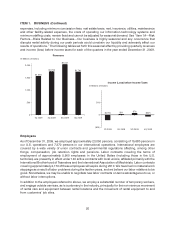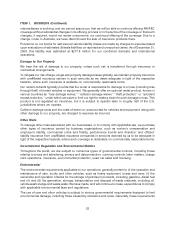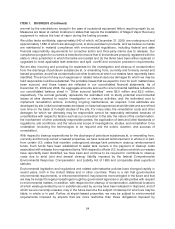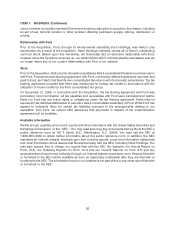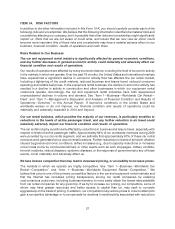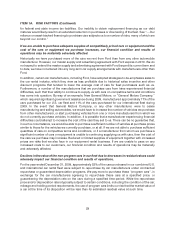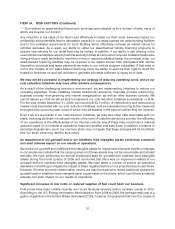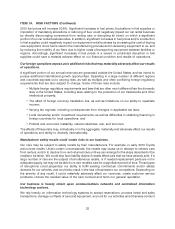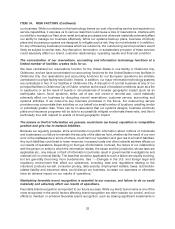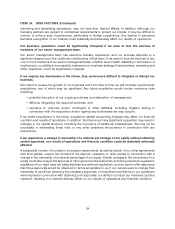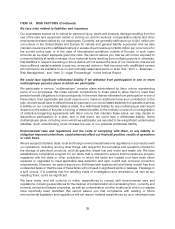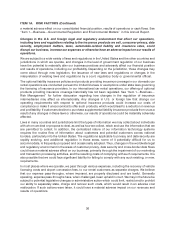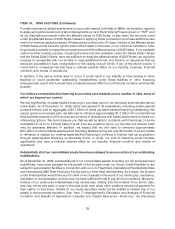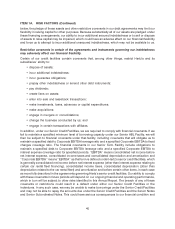Hertz 2009 Annual Report Download - page 50
Download and view the complete annual report
Please find page 50 of the 2009 Hertz annual report below. You can navigate through the pages in the report by either clicking on the pages listed below, or by using the keyword search tool below to find specific information within the annual report.ITEM 1A. RISK FACTORS (Continued)
The use of program cars enables us to determine our depreciation expense in advance. This
predictability is useful to us, since depreciation is a significant cost factor in our operations. Having
program cars in our fleet is also useful in managing our seasonal peak demand for fleet, because in
certain cases we can, if we deem it necessary, sell certain of the program cars shortly after having
acquired them. If a program car is damaged and we are unable to recover the cost of the damage from
our customer or another third party or the car otherwise becomes ineligible for return or sale under the
relevant program, our loss upon the disposition of the car will be larger than if the car had been a
non-program car, because our initial investment in the car was larger. Over the past five years, the
percentage of our car rental fleet subject to repurchase or guaranteed depreciation programs has
substantially decreased due primarily to changes in the overall terms offered by automobile
manufacturers under repurchase programs and concerns such as the credit-worthiness of the U.S.
vehicle manufacturers. Accordingly, we are now bearing increased risk relating to the residual value and
the related depreciation on our car rental fleet. In addition, our flexibility to reduce the size of our fleet by
returning cars sooner than originally expected without risk of loss in the event of an economic downturn
or to respond to changes in rental demand has been reduced as the percentage of program cars in our
car rental fleet has decreased materially. Any decrease in residual values, including in connection with a
decline in economic activity, a decline in a manufacturers reputation due to a significant product recall,
or the unexpected announcement by a manufacturer of the eventual or immediate elimination of a model
or nameplate, either due to their bankruptcy or otherwise, could have a material adverse effect on
residual values realized on the disposition of our non-program cars and equipment and the value of the
non-program cars and equipment we own, which could materially adversely affect our financial
condition and results of operations.
The failure of a manufacturer of cars that we own to fulfill its obligations under a repurchase or
guaranteed depreciation program could expose us to loss on those cars and adversely impact our
outstanding asset-backed financing facilities, which could in turn adversely affect our liquidity and
results of operations.
If any manufacturer of our cars does not fulfill its obligations under its repurchase or guaranteed
depreciation obligations with us, whether due to a default, future reorganization, bankruptcy or
otherwise, we would have to dispose of those program cars without the benefit of the associated
programs. Accordingly, our expenses associated with the disposition of these cars could increase, we
would be exposed to residual risk with respect to these cars and we could be left with a substantial
unpaid claim against the manufacturer with respect to program cars that were sold and returned to the
car manufacturer but not paid for, or that were sold for less than their agreed repurchase price or
guaranteed value. The amount of these outstanding claims fluctuates throughout the year depending on
how many cars we sell back to the car manufacturer. For the year ended December 31, 2009, the highest
outstanding month-end receivable balance for cars sold to a single manufacturer was $95.4 million
owed by Hyundai Motor Company in January 2009, which was subsequently paid. There is no
guarantee that we will be paid these amounts by any car manufacturer that files for bankruptcy
protection in the future and/or otherwise ceases operations. Any failure by a manufacturer to pay such
amounts due could, among other things, cause a credit enhancement deficiency with respect to our
asset-backed financing, in which case the collateral requirements for such facilities could be increased.
In addition, because we obtain a substantial portion of our financing in reliance on repurchase and
guaranteed depreciation programs, the failure of our car manufacturers to fulfill their current repurchase
obligations, or modification or elimination of those programs in the future, or significant adverse changes
in the financial condition of our car manufacturers, including a bankruptcy filing by a significant supplier,
could reduce our ability to acquire new cars under our outstanding asset-backed financing facilities, and
could in the future make vehicle-related debt financing more difficult to obtain on reasonable terms. See
30


